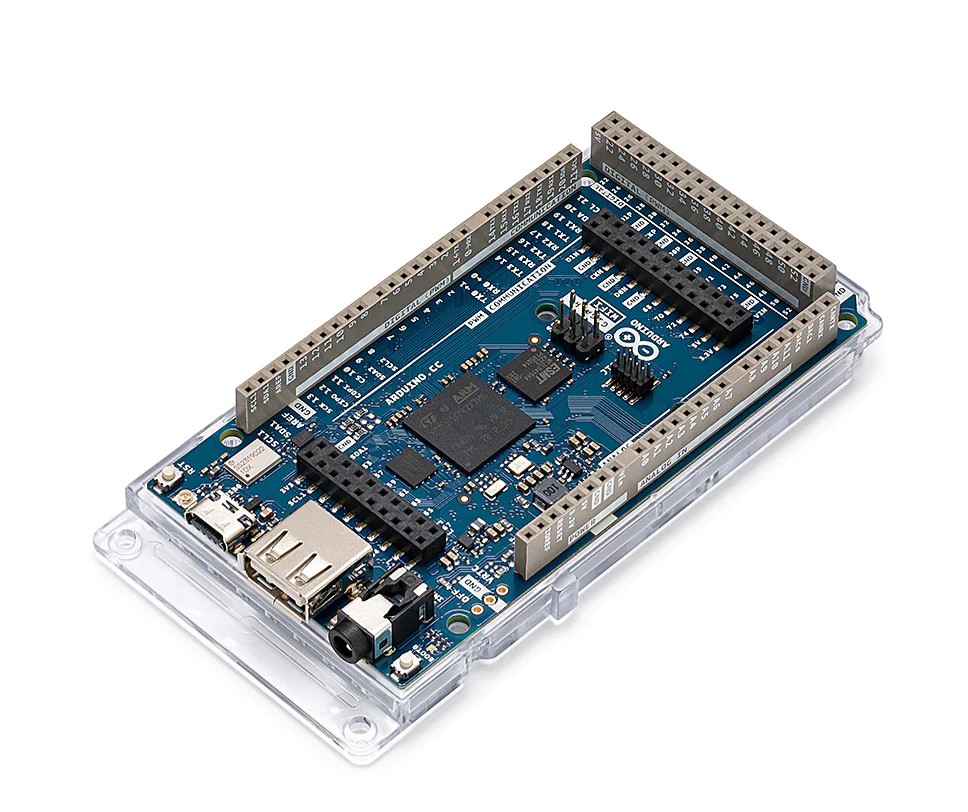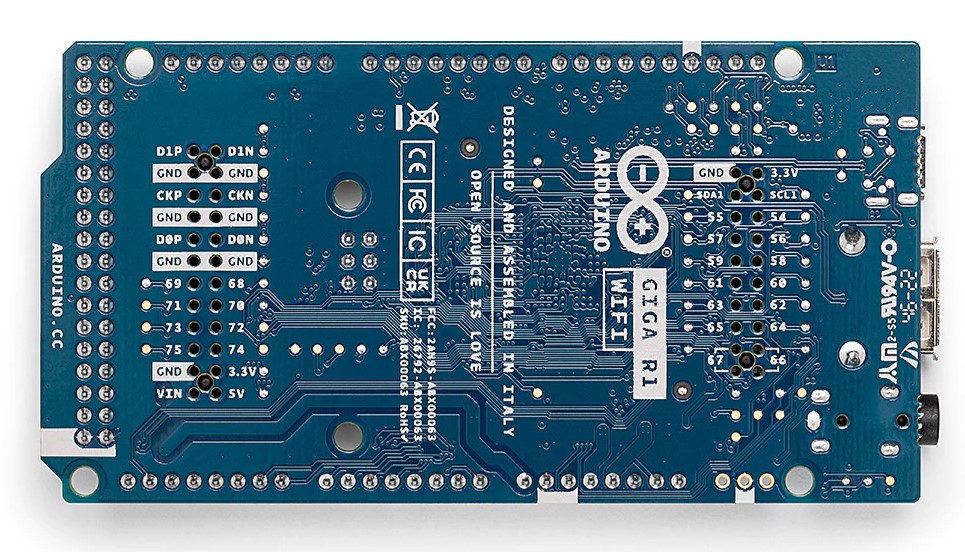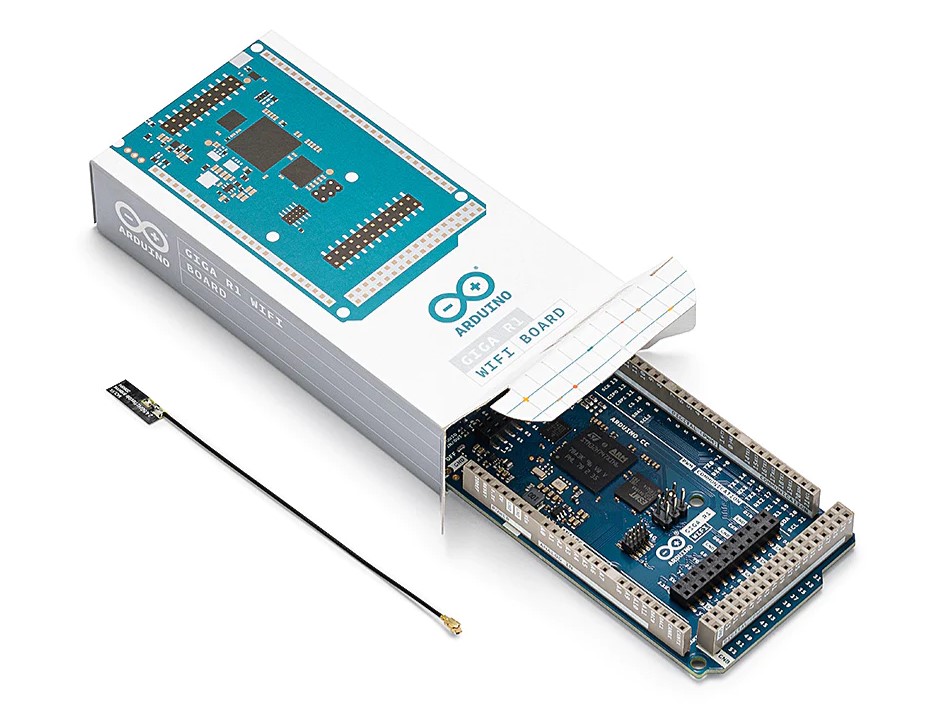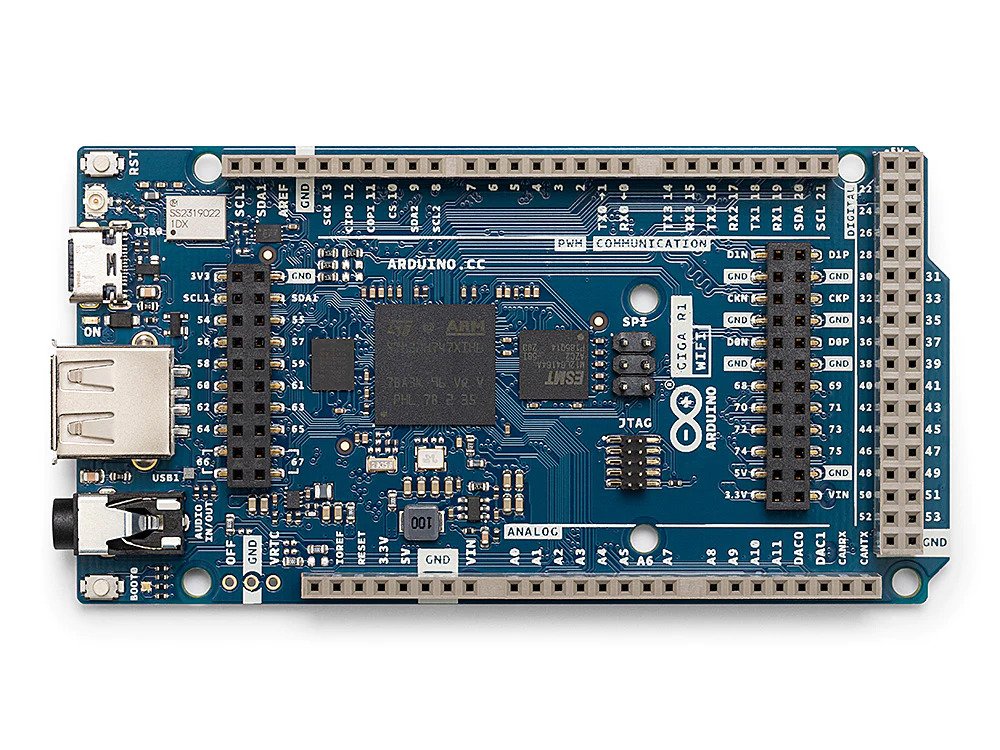Arduino Announces GIGA R1 WiFi, Its Most Powerful Board Yet
The Arduino Mega and Due boards are for those of us who need more GPIO pins than the traditional Uno form factor. A new board, GIGA R1 WiFi, just announced by Arduino, offers the familiar Mega / Due form factor, and Arduino claims that "it’s the most powerful [Arduino] ever designed for makers, engineers and creators". So lets delve under the hood and see what it has to offer.
The GIGA R1 WiFi has two Arm CPUs which form the brains of the board. The 32-bit Cortex M7 is clocked at a 480 MHz and the Cortex M4 comes in at 240 MHz. Both of these speeds are much faster than the Raspberry Pi Pico's 133 MHz dual core Arm CPU, but then the GIGA R1 WIFI is priced at $73, versus $4 for the Pico.
So what's the purpose of a dual core Arduino? Arduino claims in the press release that this board can run two Arduino programs simultaneously. We can even run Arduino and MicroPython code at the same time, useful for projects that require time critical actions.




GIGA R1 WiFi's choice of form factor is for a reason; it needs the extra space for all 76 of the GPIO pins. The sheer number of GPIO pins on offer is more than enough for even the most complex robotics, IoT or AI projects.
To achieve 76 pins while retaining the Mega / Due footprint Arduino have used space in the center of the board to breakout additional GPIO pins. While this change looks compatible with shields (Arduino parlance for addon boards, similar to Raspberry Pi HATs) it would be prudent to check before basing any projects on the board. You can find the pinout diagrams via the product page in the Arduino store [PDF]
| Row 0 - Cell 0 | Row 0 - Cell 1 | Row 0 - Cell 2 |
| Microcontroller | STM32H747XI dual Cortex®-M7+M4 32bit low power Arm® MCU | Row 1 - Cell 2 |
| Clock Speed | Cortex M7 | 480 MHz |
| Row 3 - Cell 0 | Cortex M4 | 240 MHz |
| Memory | 2MB Flash, 1MB RAM | Row 4 - Cell 2 |
| Radio / Wireless | Murata 1DX dual WiFi 802.11b/g/n 65 Mbps and Bluetooth | Row 5 - Cell 2 |
| GPIO | Digital I/O | 76 |
| Row 7 - Cell 0 | Analog | 12 |
| Row 8 - Cell 0 | DAC | 2 |
| Row 9 - Cell 0 | PWM | 12 |
| GPIO Operating Voltage | 3.3V | Row 10 - Cell 2 |
| Power Input | 6-24V | Row 11 - Cell 2 |
| DC Current per GPIO pin | 8mA | Row 12 - Cell 2 |
| Communication | UART | 4 |
| Row 14 - Cell 0 | I2C | 3 |
| Row 15 - Cell 0 | SPI | 2 |
| Connections | Camera | I2C + D54-D67 |
| Row 17 - Cell 0 | Display | D1N, D0N, D1P, D0P, CKN, CKP + D68-D75 |
| Row 18 - Cell 0 | Audio Jack | DAC0, DAC1, A7 |
| Dimensions | 101 x 53 mm | Row 19 - Cell 2 |
The Wi-Fi in GIGA R1 WiFi is provided via a Murata 1DX module and external antenna. This provides Wi-Fi 802.11b/g/n at up to 65 Mbps. The same chip also provides Bluetooth functionality.
Using cameras with microcontrollers for machine learning and Computer Vision (CV) is no longer just a folly. Even the Raspberry Pi Pico can be used for basic computer vision projects. GIGA R1 WiFi's camera compatibility looks to use Arducam's range of cameras, and with such a powerful board it is clear that Arduino are hopeful that makers will build CV projects using its new board.
Get Tom's Hardware's best news and in-depth reviews, straight to your inbox.
The eagle eyed amongst us will have noticed the two USB ports on the board. A USB C port for power and data, and a USB A port which can be used for USB host functionality. The GIGA R1 WiFi can be used as a USB HID device to simulate mouse / keyboard, but we can also plug in a USB device to the board. USB mass storage, keyboard or mouse can all be used in projects with this board.
Arduino GIGA R1 WiFi is available for purchase now via Arduino's online store.

Les Pounder is an associate editor at Tom's Hardware. He is a creative technologist and for seven years has created projects to educate and inspire minds both young and old. He has worked with the Raspberry Pi Foundation to write and deliver their teacher training program "Picademy".
-
Stesmi Nice board, but how is it more powerful than the Arduino Portenta H7?Reply
Hardware - Portenta H7 (arduino.cc)
If you mean the most powerful using the Mega form factor, then, ok, sure, or most powerful non-pro, yup, but not the most powerful Arduino board, all categories.
The Portenta H7 has 2x 80-pin connectors for GPIO, etc, 8x as much RAM and Flash, 10/100Mbit ethernet, ...
